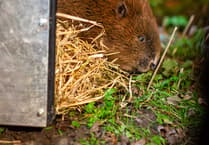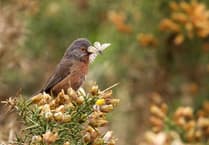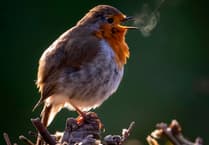Bordon’s local lowland heaths are amazing any time of year with their mosaic of heathers and gorses, pine, birch and oak woodland edges, rolling sandy hills, bogs and ponds, supporting a vast array of wildlife, much of which is rare and specially adapted to life on the heaths.
This time of year, however, the blooming heather has to take pride of place, at least for me.
I love seeing and smelling the carpets of multi-hued purple flowers and seeing all the insects feasting on the blossoms.
There are three native species of heather on these heaths: ling or common heather, bell heather and cross-leaved heath.
The bell heather has been in flower since June, and is usually a bright purple/magenta, with larger flowers that look like bells grouped at the end of the stem (hence the name).
Cross-leaved heath flowers are a similar size to the bell heather flowers but a paler pink, and the leaves and stem a paler blue-green.
Cross-leaved heath tends to prefer damper areas, while the bell heather does better in drier plots, which can be interesting to note if you want to avoid the wetter areas!
Ling or common heather usually makes up the majority of heather plants on the heaths, with feathery green leaves and smaller flowers than the other two heathers.
The flowers vary in colour from nearly white, through a spectrum of lovely pinks and lilacs. This heather comes into bloom a little later than the bell or cross-leaved, and because it is so widespread, creates a beautiful purple haze across the heathlands. Closer up, on a warm day, the smell from the flowers can be glorious.
Maybe I was a bee in a previous life because they seem to love it as well!
The heather offers a wonderful source of nectar and pollen later in the summer for all sorts of insects, including many bee species.
Honey can be made from all three heathers and has been enjoyed by humans for many centuries, if not millennia; beehives would be taken out to the heathlands at this time of year for the bees to feast on the flowers.
However, honey made from ling heather is special. If you ever get the chance to try heather honey, I can recommend it. It tends to be thicker and stickier, even gel-like, than other flower honeys (which honey from the other two heathers falls under).
Ling heather has also been used in many other ways, one of which is reflected in its Latin name, Calluna vulgaris. Calluna is related to the Greek word for “to brush”, and ling heather was harvested to make brooms.
Now is the perfect time to get out and explore these wonderful plants that are so important to our heaths – why not try to find all three species of heather the next time you are out for a walk.
Please remember to stick to the paths and take care of this very special habitat which is rarer than rainforest.
By Elinor Newman
Assistant public engagement ranger for heathlands
South Downs Heathlands Reunited Project





Comments
This article has no comments yet. Be the first to leave a comment.